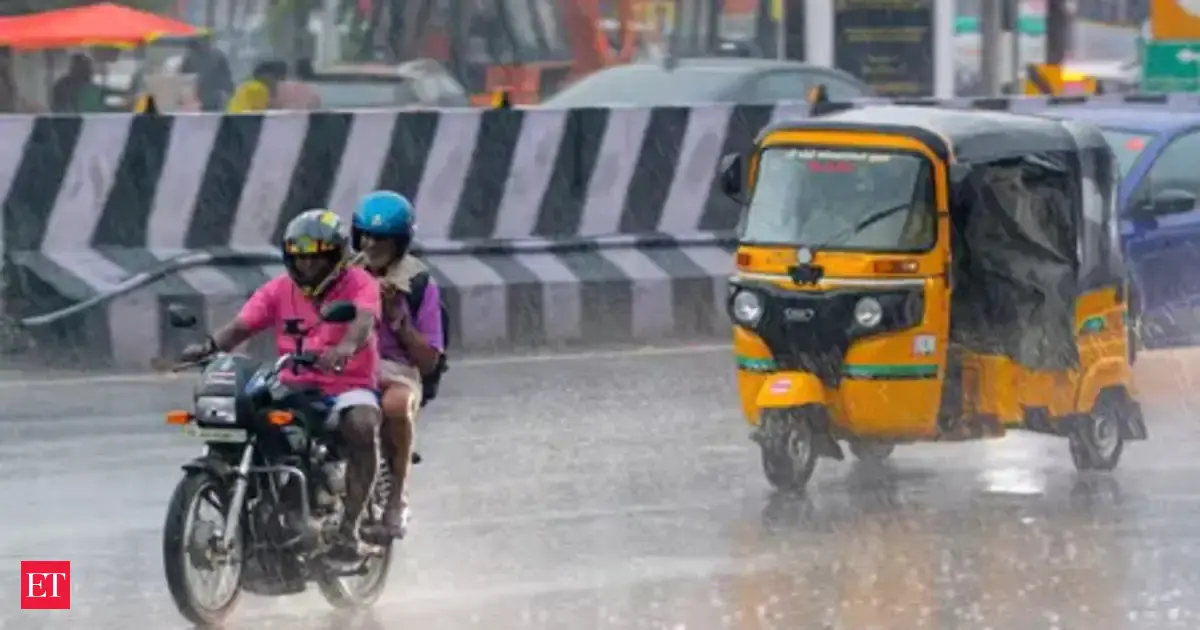By Martin Shwenk Leade
Summers in northwest India (NWI), traditionally marked by scorching dry spells, are undergoing a climate shift. New data show that the region, historically the driest of the four meteorological zones in the country, is witnessing increasingly humid pre-monsoon months and weakening monsoons, dramatically altering the character of its April-to-September season, reported TOI.An analysis of rainfall and temperature trends from 1901 onward reveals that the summer season in NWI is no longer as dry as it used to be, while the monsoon is no longer as wet. The months of April through June, typically dry and extremely hot, are now seeing rising rainfall. Conversely, July through September, when the monsoon is in full swing, are turning warmer and drier.April to June: Hot, but now wetterRainfall data indicate a steady increase in precipitation during the pre-monsoon months. May, in particular, has seen the sharpest rise. According to 30-year averages, rainfall in May has increased by nearly 50%, from 23.2 mm in 1950 to 34.3 mm in 2025. June, considered a transitional month ahead of the full monsoon, has seen a 25% increase in normal rainfall, from 65.6 mm in 1950 to 82.2 mm in 2024. April’s rainfall, though still the lowest among the three months, has also increased by 25%, from 24.2 mm to 30.4 mm in the same period.On the temperature front, April is the standout. It has become markedly hotter, with average maximum temperatures rising by 1.2°C over 75 years, from 32.6°C in 1950 to 33.8°C in 2025. May and June, however, show little to no change in their average maximum temperatures over the same period.What this suggests: April’s rising heat points to an earlier onset of summer. Meanwhile, the higher moisture in May and June could be suppressing temperature spikes, likely due to increased humidity and possibly rising pollution. The result is a more humid heat experience in early summer, making conditions more uncomfortable for residents.Live EventsJuly to September: Less rain, more heatData from 1901 onward also show that rainfall in the monsoon months, July, August, and September, is on the decline in NWI. The most pronounced drop is in August, traditionally the wettest month. According to 30-year averages, August’s rainfall has fallen from 213 mm in 1950 to 188 mm in 2024—a 12% decrease. July has seen a 10% decline (from 219.6 mm to 197.5 mm), and September a 9% drop (from 111.8 mm to 101.5 mm).This weakening monsoon has coincided with a rise in maximum temperatures. August has become warmer by about 0.75°C since 1950, while September has warmed by 0.7°C. July, though still one of the warmest months, has seen a more modest increase, slightly over 0.5°C.What this suggests: A weakening southwest monsoon in northwest India is resulting in reduced rainfall, coupled with a noticeable increase in heat during the core monsoon months. Since these are the wettest months of the year, the added heat and reduced rain spell more discomfort and greater stress for agriculture and public health.The larger climate pictureBringing these trends together, the data point to a transformative shift in northwest India’s summer weather patterns:A longer hot season: April’s warming signals an earlier start to summer, while the rising heat in August and September suggests it’s extending later into the year.Shifting rainfall patterns: More rain is falling in the pre-monsoon period, while monsoon months are getting drier. Other studies have linked climate change to a rise in extreme rainfall events. This shift increases the region’s vulnerability to both flash floods and prolonged dry spells.A rise in humid heat: With a dip in dry heat days and a rise in hot, humid conditions, residents face higher ‘real feel’ temperatures, which could have adverse impacts on public health and increase the risk of heat-related illnesses.With inputs from TOI(You can now subscribe to our Economic Times WhatsApp channel)
Read More News onNorth India summersclimate changemonsoon patternsweather trends in Indiarising temperaturesagriculture impactsenvironmental changes
(Catch all the Business News, Breaking News, Budget 2025 Events and Latest News Updates on The Economic Times.) Subscribe to The Economic Times Prime and read the ET ePaper online….moreless
(You can now subscribe to our Economic Times WhatsApp channel)Read More News onNorth India summersclimate changemonsoon patternsweather trends in Indiarising temperaturesagriculture impactsenvironmental changes(Catch all the Business News, Breaking News, Budget 2025 Events and Latest News Updates on The Economic Times.) Subscribe to The Economic Times Prime and read the ET ePaper online….moreless
Prime ExclusivesInvestment IdeasStock Report PlusePaperWealth Edition123View all Stories
